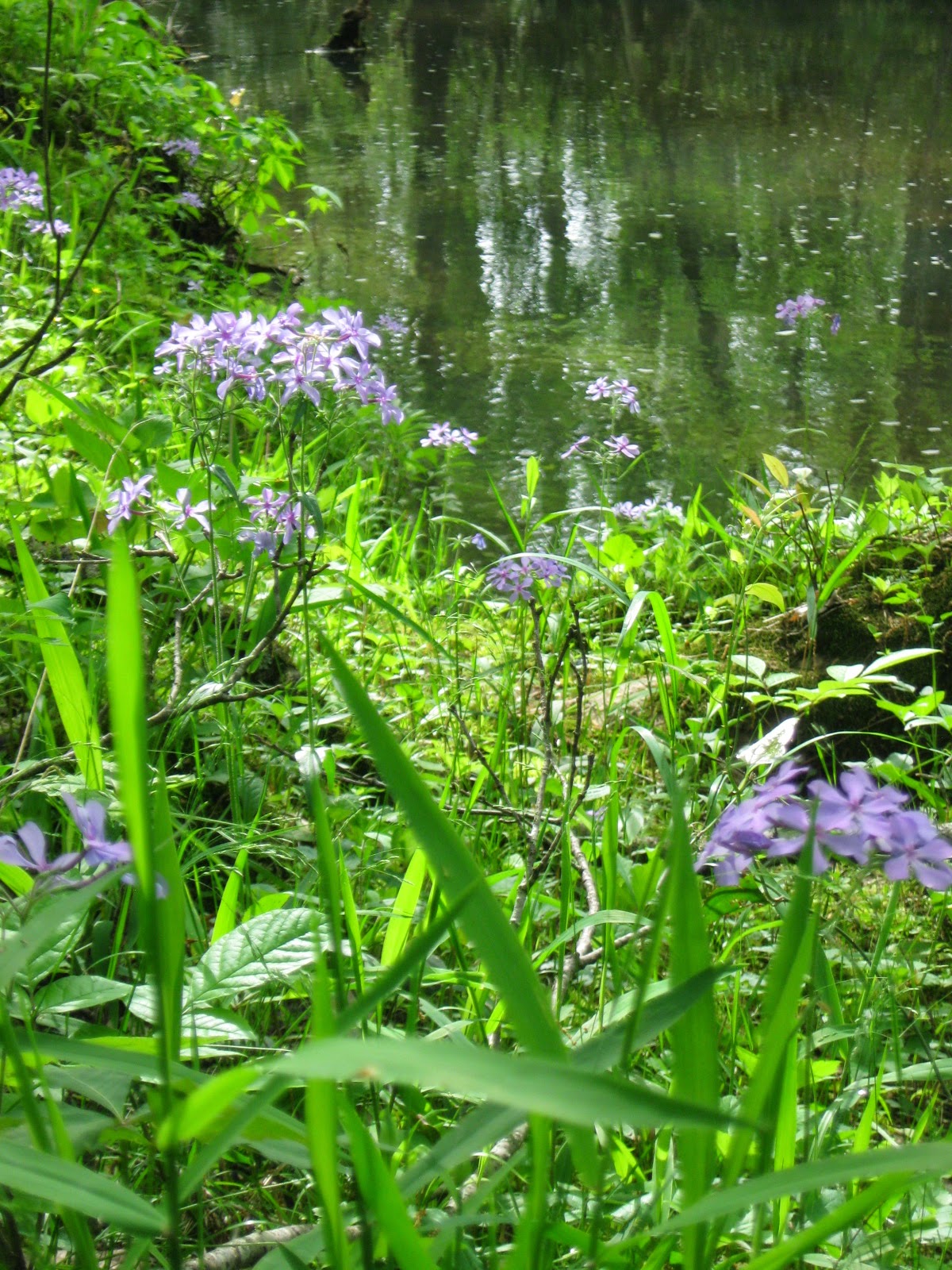
Spring is the season for a deciduous forest garden to glow. All the ground cover plants and shrubs enjoy the spring sunshine and warmer soils that are shaded over when the canopy leafs out in a few weeks. Now, all sorts of plants burst forth from the rich leaf litter but it takes a quiet walk deep into the forest to see many of these plants--modern landscaping and invasives such as privet and honeysuckle have choked many of them out.
I have a miniature decidous landscape in my backyard. It is framed by some volunteer water oaks that grew up on the border of my property before it was mine. When I first moved here the area was overrun with privet and wild blackberry vines. After clearing the invasives it didn't take me long to discover that only natives were going to thrive in that environment.
Through the gracious kindness of many friends who gave me cuttings, small plants, and the privilege of being able to rescue plants from horse pastures and some private wild areas, my 500 square foot woodland garden is becoming a delightful wonderland.

Spring is my favorite season in the woods, but as spring heats up into summer and summer cools into fall, there are always new surprises in the woods.
Many woodland natives are difficult to acquire from retail outlets because their growing season is extremely short. Whenever possible I try to use shared plants from other woodland gardeners (and I'm willing to share as well).
Collecting plants from a wild forest is highly frowned upon and I agree that we need to preserve our woodlands. I have some very strict rules when collecting plants.
1. If there are only one or two plants in a natural setting, I enjoy it where it is; for example, I NEVER take a native azalea out of the woods. There are not enough of them and these shrubs are easily attainable in retail setting.
2. My first choice for collecting is a plant that is at risk--usually in the middle of a horse or deer trail or on the edge of a power line easement.
3. If there is a significant population of my desired plant, I never take primary plants, only marginal "babies."
My atamasco lilies came from a deer/horse trail and would have died from being trampled. My windflowers came from the edge of a huge natural planting of hundreds of windflowers. The liverworts, little brown jugs, may apples and trout lilies were single baby plants on the edge of groupings of 30+ plants.
This is what my woodland garden looks like today. I can't wait to see what it will look like tomorrow.

 Just when it seems like the trees have finished their spring bloom show, the grancy gray beards burst into a shimmery cloud of white. The fruit trees were lovely, the dogwoods were elegant, but God saved the best for last. Apparently my tree enjoyed the wet winter because this year's blooms are so bright they practically glow in the dark.
Just when it seems like the trees have finished their spring bloom show, the grancy gray beards burst into a shimmery cloud of white. The fruit trees were lovely, the dogwoods were elegant, but God saved the best for last. Apparently my tree enjoyed the wet winter because this year's blooms are so bright they practically glow in the dark. 

















